The relationship between humans and birds is something that has been around for generations, although the appearance of “A Kestrel for a Knave” by Barry Hines probably bought it in to focus for many. This book is both heart breaking and yet full of hope for the future. The impact of his mother’s death on both Trevor and his father is something that we really feel, but the relationship that develops with the birds allows for healing and change. I am delighted that I was asked to take part in this blog tour and this book is going to be a firm favourite for those who love to feel close to nature.
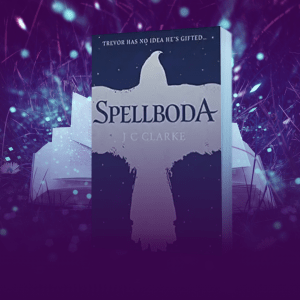
1st September 2021, The Book Guild
“Trust, belief and a little magic… then maybe they could both fly free Since Trevor’s mum died his dad can barely look at him without yelling. Home is awful, school is worse. People just let you down, and Trevor only talks to Mrs. Bingo-Wings, his mum’s cat. But then he meets Midge, a peregrine falcon in danger, and finds out he has a gift that could change his life forever. Trevor is thrown into the heart of a magical adventure that could promise freedom – for Midge and for himself – but can he overcome his doubts and fears, and take on the destiny he’s only just discovered?”
Previously a falconer, consultant and writer-presenter of CITV’s Wild World, JC Clarke is now loving the writer’s life and is also a script consultant and copywriter. She’s been involved in falconry and conservation industries for over twenty years and is passionate about protecting wildlife. An alumna of the Curtis Brown Creative Writing for Children Course, Jo was shortlisted for Best Opening Chapter for Spellboda at the 2019 Jericho Writers Festival of Writing. She lives in Ashford, Kent with her family – and a large number of animals!
For publicity requests, please contact info@literallypr.com
Online media folder: bit.ly/JCClarke_PR
In short, what is Spellboda about?
Spellboda is a magical animal adventure about Trevor, a boy struggling with grief and who doesn’t ‘fit in’, but discovers he has a magical gift. He can talk to Midge, a peregrine falcon, who desperately needs his help. Can Trevor work out who wants to steal Midge, why, and most importantly, can he believe he’s worth something, stop the thieves and save Midge from a life in captivity?
What inspired you to write the book?
I’ve worked with birds of prey for much of my career and I’m passionate about animal conservation. Some of my work has also been with young people, and helping them to transition through difficult situations and times in their lives, and I wanted to write a story that would also help young people to be confident in their unique abilities and strengths, and to believe in themselves.
What are some of the key themes that you explore in the book?
Key themes are animal conservation and education, handling grief and relationship dysfunction, finding self-confidence, self-belief and self-esteem, and being brave enough to live life in colour – with a touch of magic!
Is Spellboda your first book? When did you start writing it?
Although I have several manuscripts gathering dust in my cupboard, Spellboda is the first book I was brave enough to take forward to publication. I started writing it in 2014, but I was working full-time at this point so it took a while – especially as I put it through six re-drafts before I was even close to being happy with it. I should have listened to the themes in the story sooner and believed in myself a little more!
Who, or what, are some of your literary influences?
CS Lewis has been a huge influence and inspiration to my writing, as has Alan Garner, who is my hero! I have a love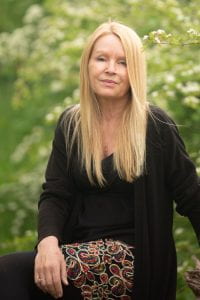 of older classics – including The Water Babies, The Hobbit, Lord of The Flies, and many more, and as I child I used to read Dickens’ A Christmas Carol every December without fail!
of older classics – including The Water Babies, The Hobbit, Lord of The Flies, and many more, and as I child I used to read Dickens’ A Christmas Carol every December without fail!
What inspired you to write for children / young adults, as opposed to adult fiction?
I’ve always read children’s fiction as a preference to adult fiction, and feel drawn to write it. Imagination is a superpower, and I feel that children aren’t able to let theirs go as much since the advent of tablets, mobiles, gaming and social media… and that books can still give them a chance to let their imaginations go wild.
You were an alumna of the Curtis Brown Creative Writing for Children Course; what was this like, and how did it impact your writing?
The course was hugely helpful to me mid-way through writing Spellboda. It inspired yet another re-draft and also helped me to develop a thicker skin for critical review! Working with respected authors and agents was a great way to gain valuable new perspectives on story writing.
How do you think your story can impact readers?
My hope is that Spellboda helps anyone, no matter their age, to feel worth something when they doubt, to feel they can be brave enough to step up and grab their chance when it comes. I hope awareness is raised for conservation – both in the UK and worldwide – and the belief that making a difference is possible, no matter how small the act.
How long did it take you to write Spellboda, and why?
It took me 6 to 7 years to write Spelloboda, but this was partly because I was working full-time alongside writing, and I wanted to keep re-drafting and working on the manuscript until I felt it was as good as I could make it.
What were some of the challenges when writing the book?
Time and self-confidence were my biggest challenges. Next was finding a place where I could write uninterrupted! I discovered many coffee shops along the way!
And what were some of the highlights?
I vividly recall finishing the book, after the last edit. I think it was because I knew I had got as far as I could at being happy with the manuscript, as much as writers ever can be anyway! I sat at my computer and had tears pouring down my face; happiness at the sense of achievement, but actually more for Trevor, and for his falcon friend, Midge, who have become so real in my life. Other highlights include taking time away to ‘retreat’ to Derbyshire, where Spellboda is set, to walk the peaks and live and breathe in every aspect of the setting I was writing.
You were previously a falconer and have a passion for wildlife; could you tell us more about this?
I fell in love with birds of prey aged 7, when on a trip to Scotland. Sitting in a hide for three hours, at last I watched the UKs only breeding pair of ospreys (at the time) fly over the loch to their nest with fish to feed their babies. I was fascinated, hooked. Even now, every time a bird flies overhead I stop to watch it… especially birds of prey. I spent 18 years as a falconer and my fascination with raptors only got stronger. I’ve been lucky enough to travel more in recent years, and I always seek out the wildlife elements of any place I visit, no matter what or where they are. The natural world is a gift for us all to marvel at and enjoy, and I’ve just felt more and more strongly the responsibility to play my part in protecting it.
How can readers make a difference when they read your story and engage with the messages of conservation and self-belief?
Even the smallest positive act in any area of life will make a difference. My hope is that readers will look at wildlife in a new way, and be more aware of the ways they can help. Even getting involved in local initiatives, such as the work being done at The Wildwood Trust, and many other amazing organisations, will help, and the more of us that get involved, the more difference we will make collectively. I always remember the starfish story!
Why it is important to try to engage with young people in this age bracket (9-15) that often falls between the gaps of middle grade and YA, particularly in light of your youth work?
I believe that ages 9 – 14 are an increasingly crucial stage in development for a young person. It’s a concern to me that so many are exposed to all kinds of material on social media at this age, and the increasing pressure for an unrealistic expectation of some idea of ‘perfection’ that only filters can bring! It’s harder than it’s ever been to be a young person, and to navigate the challenges. I’m sure we can all relate to the teenage years as being a stage we were grateful to survive! Today we see issues relating to personal control, brought about by feelings of inadequacy, and this often seems to manifest in general feelings of hopelessness, a lack of direction and confidence, and sometimes heart-breaking cases of emotional trauma and pain, which can then result in very distressing reactive behaviour. I believe our young people are up against it in a way like never before, and that we need to help them, empower them to believe in themselves, and give them confidence again.
Why do you particularly support charities such as Wildwood and Vulpro? What is it about these charities in particular that stand out for you?
I’m passionate about animal conservation, and supporting Wildwood and Vulpro is hugely important to me. Wildwood’s mission to conserve indigenous species, the work they are carrying out on breed and release projects, is amazing, and they were the obvious local choice for me to support a UK charity. As a worldwide issue, many people are unaware that huge numbers of vultures are dying, and many species are now critically endangered. Vultures are a vital component in our ecosystem and their loss would be catastrophic. I adore vultures, and so this was again a natural choice for me. Vulpro are doing the most amazing work out in South Africa, and they need all the help they can get!
Do you have any trigger warnings on or in the book? The book deals with emotional abuse from a parent – what sort of feedback have you had around this theme?
Some feedback has been that it was a struggle to read about Trevor’s relationship with his father, but some has also been that it was too tame, so I know it’s a very emotive area. It’s hard to acknowledge but many people have gone through some element of abuse or dysfunction through their childhood at some point, so my hope is to face it head on and show different perspectives may help a reader feel reassured and not alone if anything like this was to happen / has happened to them.
What’s next for Trevor and Midge?
Trevor and Midge are fully immersed in the adventure of Book Two now, which is in progress. I’ve also been lucky enough to be asked to write a film script for Spellboda, and I’m currently working on this with an Emmy award-winning writer in LA as my editor – so I’m feeling very grateful!
Do you plan on writing any more books in the future?
I’m planning a set of three books for the Spellboda series, and already have ideas for other books!
And finally, what do you hope that readers will take away from the book?
I hope readers will take away that satisfied feeling that comes from reading a story written with passion, that connects and resonates with them and lifts their spirits. I hope they can lose themselves in the story, and believe amazing things are possible in life, if they believe in themselves!
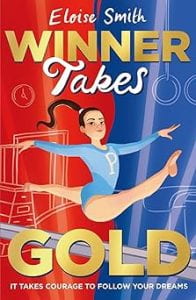 For most of us, the world of elite sports is something that we hear about in the news. It is also a world where we watch in awe, particularly when major events such as World or Olympic championships occur. With the Olympics taking place in Paris this summer millions of people around the world will be watching the events and some of the most popular will be the gymnastics. The author of this book, Eloise Smith is a former world class fencer and she wrote about this world in her first book “Sister to a Star”. Her new book has a slight change in direction, as she enters the world of young gymnasts.
For most of us, the world of elite sports is something that we hear about in the news. It is also a world where we watch in awe, particularly when major events such as World or Olympic championships occur. With the Olympics taking place in Paris this summer millions of people around the world will be watching the events and some of the most popular will be the gymnastics. The author of this book, Eloise Smith is a former world class fencer and she wrote about this world in her first book “Sister to a Star”. Her new book has a slight change in direction, as she enters the world of young gymnasts.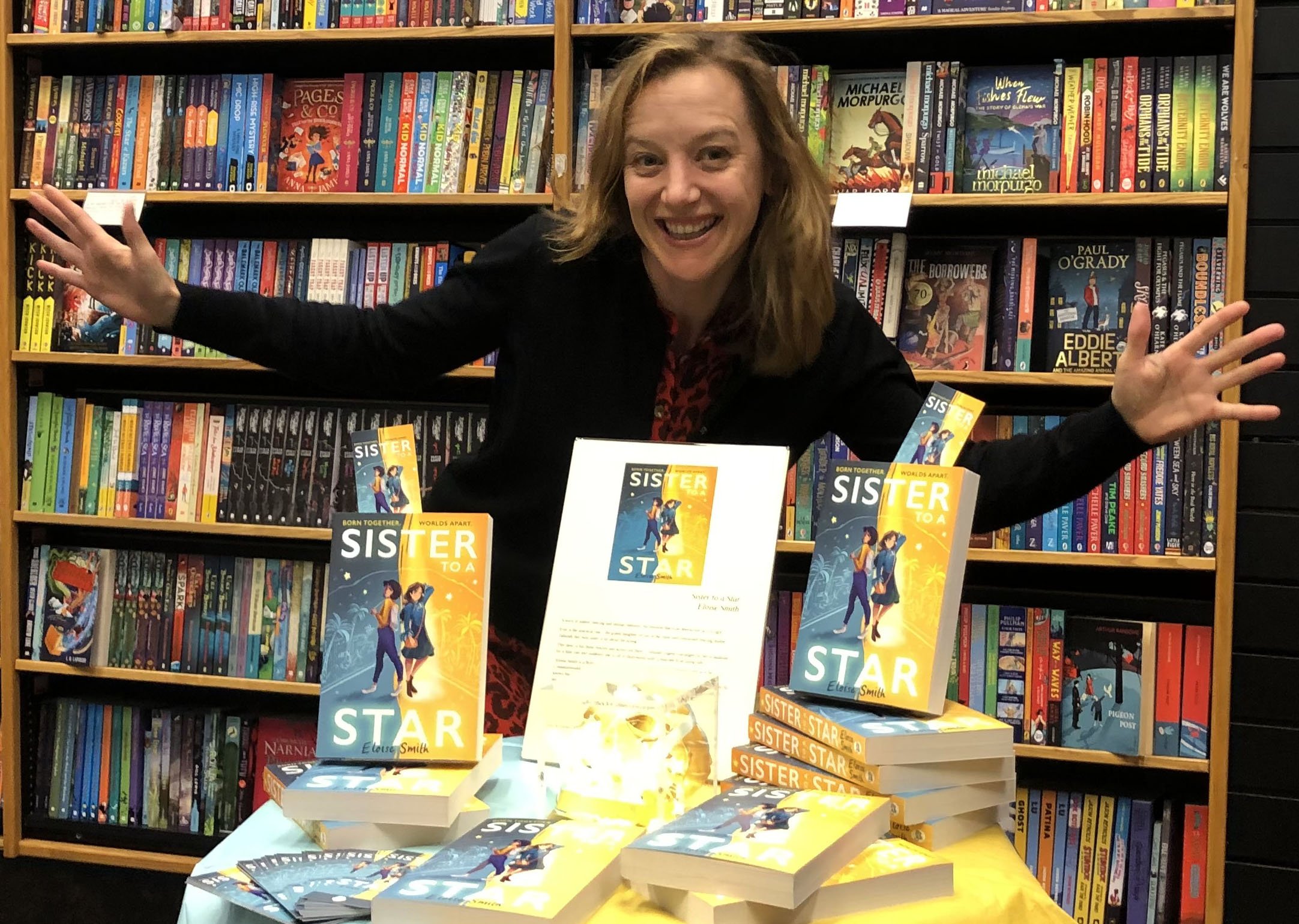

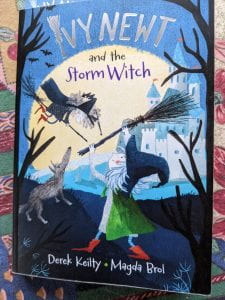
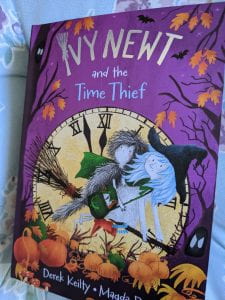
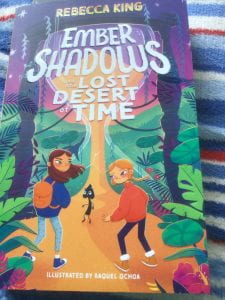 Most of us assume that we have a right to self-determination and the idea that we are restricted by a fate that is given to us at birth, is something that we might have real problems with. This is the idea behind the adventures of the feisty Ember Shadows. In the first book she is looking forward to receiving her fate card, which will decide if she can follow her dream of being an inventor; however, things do not happen as she hopes. Firstly, there is no fate written on her card and then her younger sister receives her card, saying that she only has a short while to live. This leads to a fantastic adventure as Ember tries to change the way that the fates work.
Most of us assume that we have a right to self-determination and the idea that we are restricted by a fate that is given to us at birth, is something that we might have real problems with. This is the idea behind the adventures of the feisty Ember Shadows. In the first book she is looking forward to receiving her fate card, which will decide if she can follow her dream of being an inventor; however, things do not happen as she hopes. Firstly, there is no fate written on her card and then her younger sister receives her card, saying that she only has a short while to live. This leads to a fantastic adventure as Ember tries to change the way that the fates work.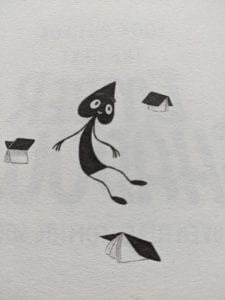 safety in the old system and they have problems coping with having choice. Someone is taking this fear to an extreme and they are gathering the strands of fate and cutting them, so that the owners are killed. Ember and her brilliant sidekick Hans (yes, he is a hand from a clock, brought to life by magic) decide that they need to try and stop any further disasters taking place. They meet a wide variety of characters on the way, from giant spiders to mon-keys (who manage the weather patterns), but there is always the lurking menace of the line cutter. The author manages to throw a lot of red herrings in our path and especially in Ember’s way, so that she is often caught out in her thinking about the culprit. The denouement sees an unexpected villain and an upsetting discovery about someone she had thought was a friend.
safety in the old system and they have problems coping with having choice. Someone is taking this fear to an extreme and they are gathering the strands of fate and cutting them, so that the owners are killed. Ember and her brilliant sidekick Hans (yes, he is a hand from a clock, brought to life by magic) decide that they need to try and stop any further disasters taking place. They meet a wide variety of characters on the way, from giant spiders to mon-keys (who manage the weather patterns), but there is always the lurking menace of the line cutter. The author manages to throw a lot of red herrings in our path and especially in Ember’s way, so that she is often caught out in her thinking about the culprit. The denouement sees an unexpected villain and an upsetting discovery about someone she had thought was a friend.
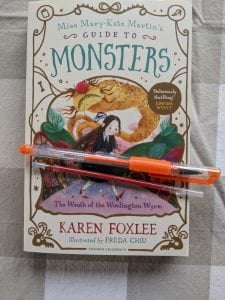 I began reading this book whilst drinking coffee at Paddington Station, nothing strange so far, but then as I got to the line about the strange screeching noise, it happened!
I began reading this book whilst drinking coffee at Paddington Station, nothing strange so far, but then as I got to the line about the strange screeching noise, it happened!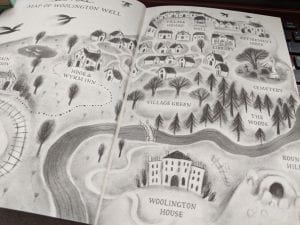 intrigue or action. I love the map of the village and its surroundings, so that you can follow the action as it takes place. But can someone tell me where the church is? There is a cemetery, but no church building, so is there a story behind this omission? We have a beautiful rural idyll and the idea of a huge shopping centre in the middle of the village is unthinkable. In real life I think there would be outrage and the planners would hopefully stop it. One of the things that the two girls did discover is that the legend of the Wyrm and the odd happenings only occur when work is being done to the Village Square and the Well, after which the village is named, so is there a link?
intrigue or action. I love the map of the village and its surroundings, so that you can follow the action as it takes place. But can someone tell me where the church is? There is a cemetery, but no church building, so is there a story behind this omission? We have a beautiful rural idyll and the idea of a huge shopping centre in the middle of the village is unthinkable. In real life I think there would be outrage and the planners would hopefully stop it. One of the things that the two girls did discover is that the legend of the Wyrm and the odd happenings only occur when work is being done to the Village Square and the Well, after which the village is named, so is there a link?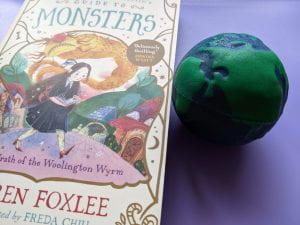 and I have my own version of this, as you can see from the picture at the side. She also needs the reassurance of things being balanced, even down to glittery shoes to go with the glittery bag. Mary-Kate seems to display many feelings that we might understand as being neuro-diverse, yet she manages to overcome many of her anxieties when she really wants to find things out. Her new friend Arabella is also a great support and although an outgoing, bouncy extrovert, she is willing to listen to Mary-Kate and even follow her when needed.
and I have my own version of this, as you can see from the picture at the side. She also needs the reassurance of things being balanced, even down to glittery shoes to go with the glittery bag. Mary-Kate seems to display many feelings that we might understand as being neuro-diverse, yet she manages to overcome many of her anxieties when she really wants to find things out. Her new friend Arabella is also a great support and although an outgoing, bouncy extrovert, she is willing to listen to Mary-Kate and even follow her when needed.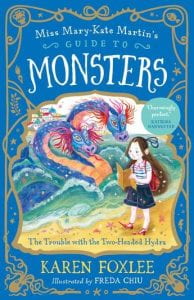

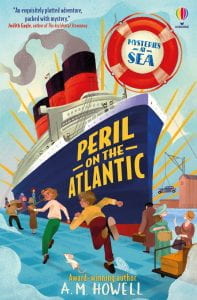 Over the last few years I feel that we have seen a proliferation of stories about adventures on ships and trains. It is not really surprising as these have been a favourite setting for crime novels ever since Hercule Poirot took a journey down the Nile and boarded the Orient Express. It allows the author to work with a close knit group of characters and in a space that is limited, thus allowing them to create the necessary settings required for the action. Although there have been many stories about The Titanic, I can’t remember any others written about this particular Grande Dame of the Sea. Interestingly the ship was only finished because of a government loan, during the depression and a condition was that Cunard would merge with the White Star Line. So in early 1936 RMS Queen Mary made her maiden voyage and then continued to cross the Atlantic until she was de-commissioned in 1967; she was a truly iconic vessel.
Over the last few years I feel that we have seen a proliferation of stories about adventures on ships and trains. It is not really surprising as these have been a favourite setting for crime novels ever since Hercule Poirot took a journey down the Nile and boarded the Orient Express. It allows the author to work with a close knit group of characters and in a space that is limited, thus allowing them to create the necessary settings required for the action. Although there have been many stories about The Titanic, I can’t remember any others written about this particular Grande Dame of the Sea. Interestingly the ship was only finished because of a government loan, during the depression and a condition was that Cunard would merge with the White Star Line. So in early 1936 RMS Queen Mary made her maiden voyage and then continued to cross the Atlantic until she was de-commissioned in 1967; she was a truly iconic vessel.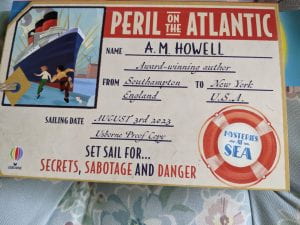 agreeable to a strong-willed and headstrong young girl. Of course Alice sneaks out to explore and accidentally finds herself a witness to an attempted murder. As a result of this, she makes friends with Sonny, Miriam (both young passengers) and Charlie, a young member of the crew. They decide to investigate the incident and soon find themselves caught up in all kinds of skulduggery and criminal activity. While the adults are concerned with trying to win the Blue Riband for the fastest Atlantic crossing, the young people are finding links to this and the other happenings on the ship. Can the children solve the mysteries and will justice be served?
agreeable to a strong-willed and headstrong young girl. Of course Alice sneaks out to explore and accidentally finds herself a witness to an attempted murder. As a result of this, she makes friends with Sonny, Miriam (both young passengers) and Charlie, a young member of the crew. They decide to investigate the incident and soon find themselves caught up in all kinds of skulduggery and criminal activity. While the adults are concerned with trying to win the Blue Riband for the fastest Atlantic crossing, the young people are finding links to this and the other happenings on the ship. Can the children solve the mysteries and will justice be served?
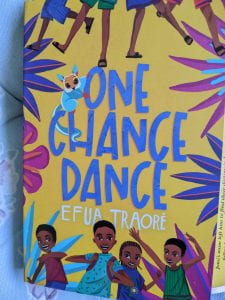 small part of the scene in this country. Books written by people of colour are beginning to be published, but we still have a long way to go. It seems appropriate that as I am writing this post, the Diverse Book Awards longlists are being announced. I have to say that I can imagine this book being part of the longlist next year and I hope that it achieves this.
small part of the scene in this country. Books written by people of colour are beginning to be published, but we still have a long way to go. It seems appropriate that as I am writing this post, the Diverse Book Awards longlists are being announced. I have to say that I can imagine this book being part of the longlist next year and I hope that it achieves this. filled with little stories, but it was not until much later that she began to write them down.
filled with little stories, but it was not until much later that she began to write them down.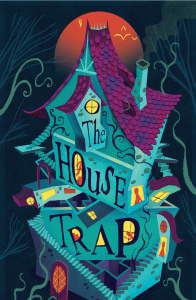 I suspect that we all have experience of houses that are run-down, creepy and have stories told about them. I still remember as a child a house, on my walk home from town, that we had been told was inhabited by a witch! Needless to say we always walked on the opposite side of the road, even though we never saw this person.
I suspect that we all have experience of houses that are run-down, creepy and have stories told about them. I still remember as a child a house, on my walk home from town, that we had been told was inhabited by a witch! Needless to say we always walked on the opposite side of the road, even though we never saw this person.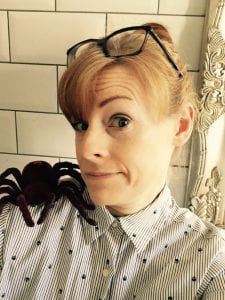 down she knew she could be both.
down she knew she could be both.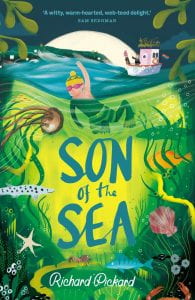 wrote a short entry for me, all about his influences and where he writes. He spoke about the outline that he was writing for his second book, so it is fantastic to see all of his hard work come to fruition. You can see this first blog entry by searching”Peculiar tale of the Tentacle Boy”
wrote a short entry for me, all about his influences and where he writes. He spoke about the outline that he was writing for his second book, so it is fantastic to see all of his hard work come to fruition. You can see this first blog entry by searching”Peculiar tale of the Tentacle Boy”
 of older classics – including The Water Babies, The Hobbit, Lord of The Flies, and many more, and as I child I used to read Dickens’ A Christmas Carol every December without fail!
of older classics – including The Water Babies, The Hobbit, Lord of The Flies, and many more, and as I child I used to read Dickens’ A Christmas Carol every December without fail!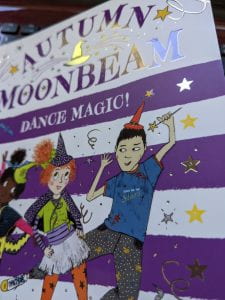
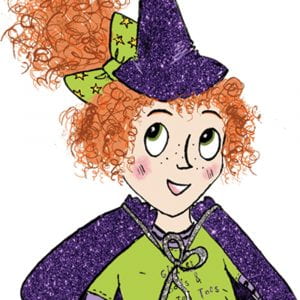 Sparkledale Dance Academy, brings a flyer into school, Autumn gets very excited; the Academy is about to hold trials for young people to try out for their competitive dance team, The Black Cats. However, Autumn’s nasty neighbour Severina is also determined to make the team and she is willing to go to great lengths to achieve her end, even putting a spell on Autumn that turns her into a black cat. The question is, will our heroine achieve her dream?
Sparkledale Dance Academy, brings a flyer into school, Autumn gets very excited; the Academy is about to hold trials for young people to try out for their competitive dance team, The Black Cats. However, Autumn’s nasty neighbour Severina is also determined to make the team and she is willing to go to great lengths to achieve her end, even putting a spell on Autumn that turns her into a black cat. The question is, will our heroine achieve her dream?
